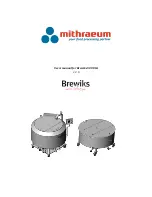
Chapter 1
Introduction
Xmath Interactive Control Design Module
1-2
ni.com
•
Chapter 5,
, describes the user interface,
terminology, and parameters used for root locus synthesis.
•
Chapter 6,
, discusses the Pole Place synthesis
window, which is used to design a SISO controller by assigning the
closed-loop poles.
•
Chapter 7,
, discusses the LQG synthesis window
which is used to synthesize a linear quadratic Gaussian (LQG)
controller for a SISO plant.
•
Chapter 8,
, describes the H
∞
synthesis window
used for SISO plants. The H
∞
synthesis window is used to synthesize
a central controller. Such controllers are sometimes called linear
exponential quadratic Gaussian (LEQG) or minimum entropy
controllers.
•
Chapter 9,
, describes the History window used for
SISO plants. The History window is used to display and manipulate the
design history list, which is a list of controllers that have been
explicitly saved during the design process.
•
Chapter 10,
, describes the form of the
Alternate Plant window used for SISO design.
•
Chapter 11,
, provides an introduction
to MIMO design building on the earlier discussions of SISO design.
ICDM automatically switches between SISO and MIMO modes
depending on the plant that is read in.
•
Chapter 12,
, describes the MIMO LQG/H
∞
synthesis window. The LQG/H
∞
window is used to synthesize both
LQG and H
∞
controllers. The two design methods have been
combined in a single window because of the similarity regarding the
use of weights: constant weights, frequency-dependent weights, and
integrators.
•
Chapter 13,
, describes multi-loop synthesis. The
multi-loop window is used to synthesize a MIMO controller using PID
and Root Locus methods, applying them one loop at a time. In many
practical industrial applications, this is the way control systems are
designed for complex multivariable plants.
•
Appendix A,
, describes the basics of using
an Xmath GUI tool. Throughout this manual, extended examples
following each function discussion help pinpoint the flexibility and
applicability of the Interactive Control Design function library. This
appendix describes the basics of using an Xmath GUI tool.













































